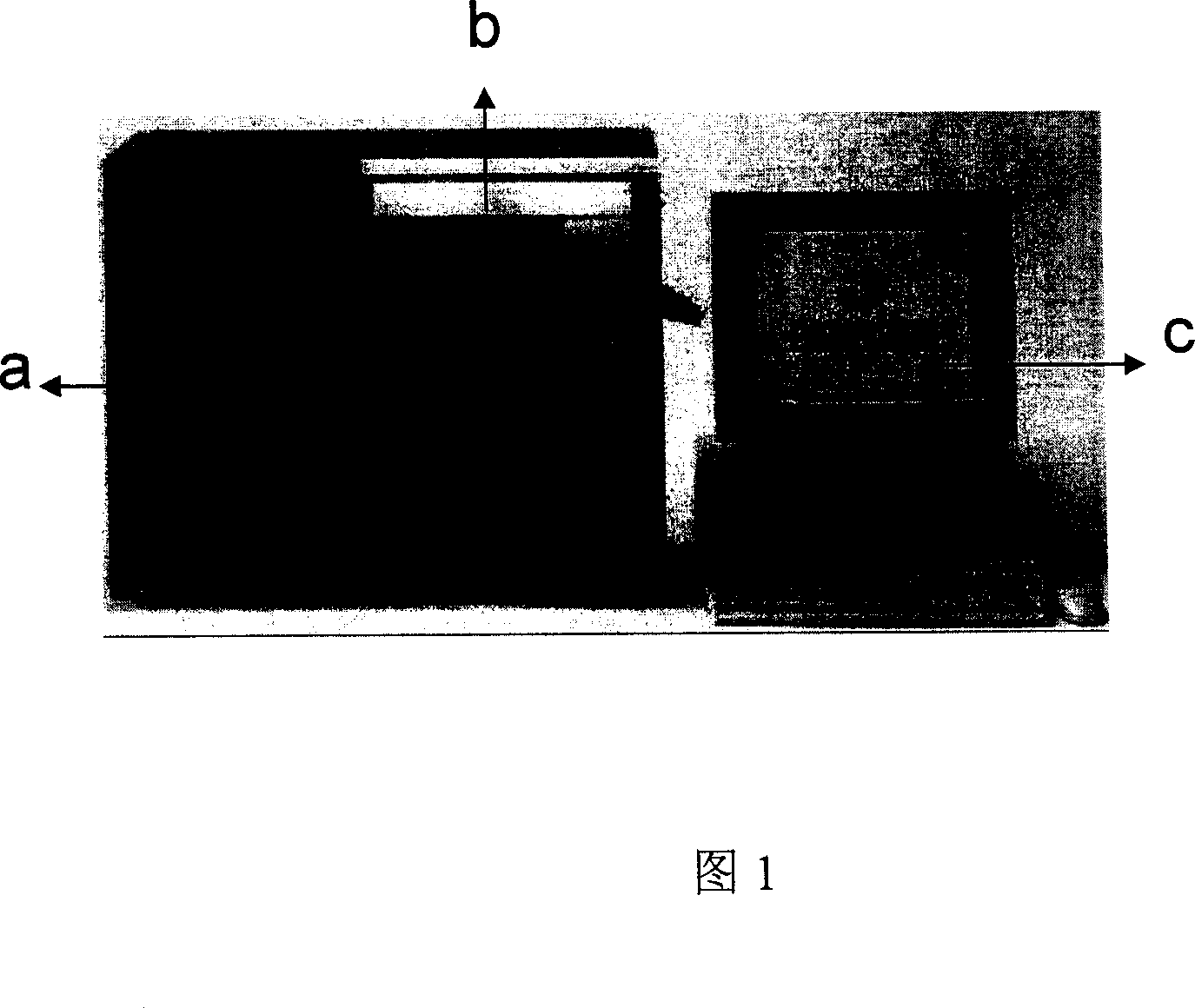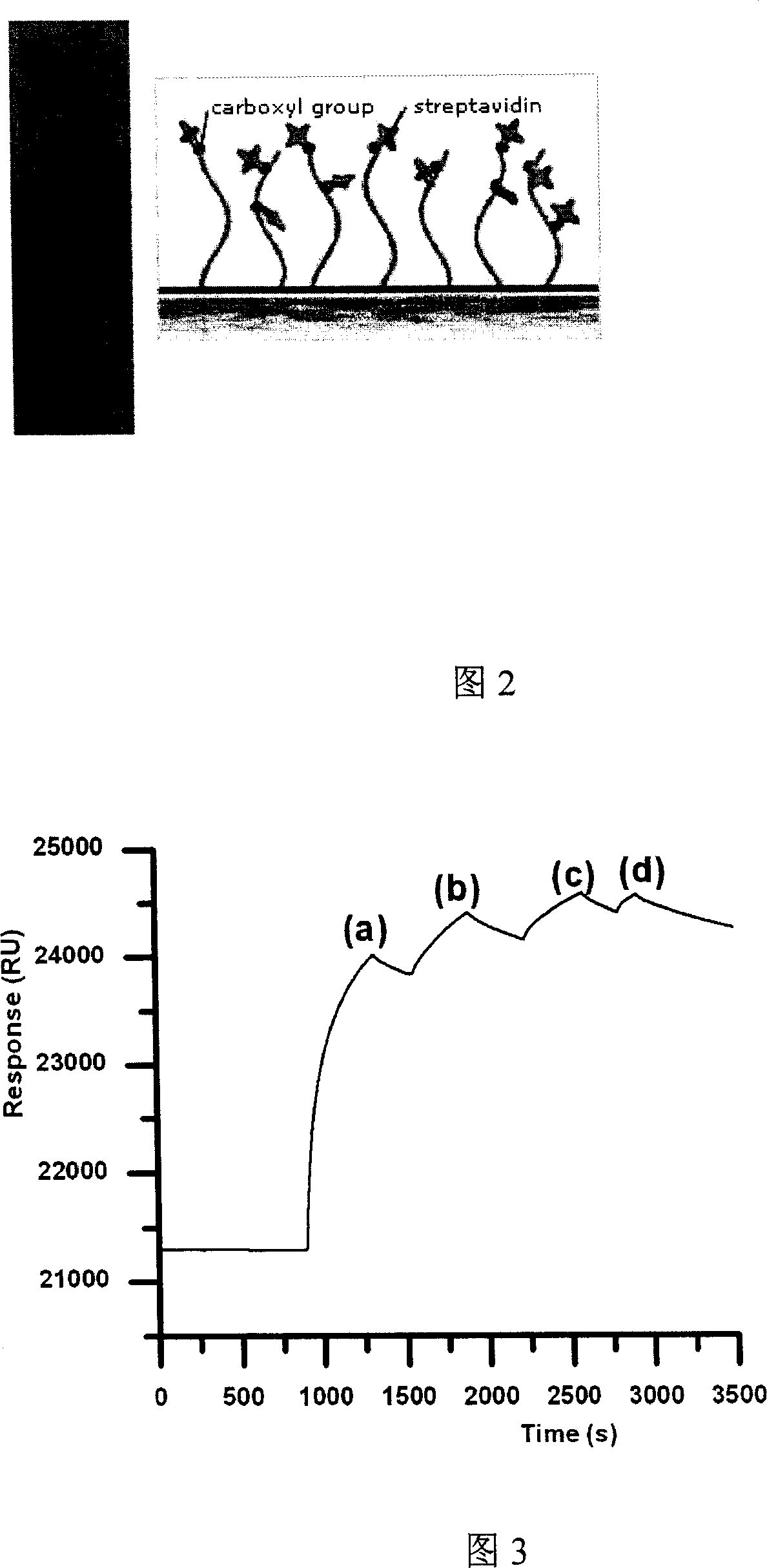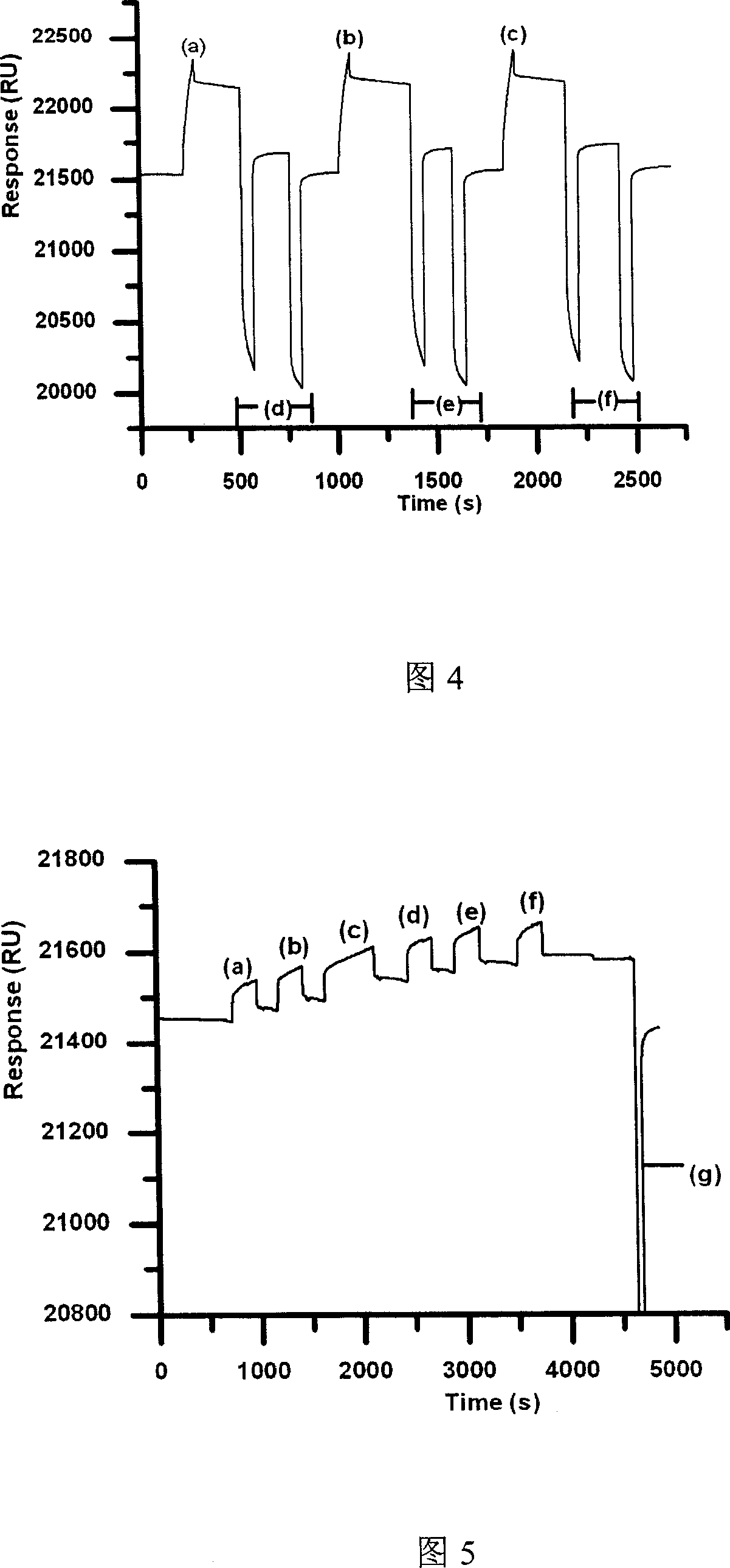Reversible fixture for aglucon of streptavidin envelope chip surface
A ligand and chip technology, applied in SA-chip detection system, realizes the field of reversible immobilization of ligands on the surface of SA-chip, can solve the problem of high cost of application experiments, and achieve the effect of reversible immobilization
- Summary
- Abstract
- Description
- Claims
- Application Information
AI Technical Summary
Problems solved by technology
Method used
Image
Examples
Embodiment 1
[0114] Example 1. Immobilization and regeneration of ScFV-Z186-SBP ligand on the surface of SA chip
[0115] The present invention uses a BIAcore biosensor system (BIAcore3000), and operates according to the instructions for use. After the SA chip was locked in the instrument, it was first injected with 50 mM NaOH (containing 1 M NaCl) three times, each time for 1 min, with a flow rate of 40 μL / min. ScFV-Zl86-SBP was dissolved in running buffer (10mM HEPES, pH 7.4, 150mM NaCl, 3mM EDTA, 0.005% Surfactant P20), with a final concentration of 20μg / mL. After the baseline of the SPR (Surface Plasmon Resonance) response graph (sensorgram) was stable, the ligand solution was injected at a flow rate of 5 μL / min for 7 minutes. To determine the maximum amount of binding, three consecutive injections were performed. After the first injection, there was a response of approximately 2700 RU (5 μL / min, 7 min). After continuous injection, the response value rose to 3300RU and basically rea...
Embodiment 2
[0118] Example 2. Immobilization and regeneration of Nano-label modified short peptides on the surface of SA chip
[0119] Nano-label modified short peptides were dissolved in running buffer with a final concentration of 200μg / mL. After the baseline of the SPR response graph (sensorgram) was stable, the ligand solution was injected at a flow rate of 5 μL / min for 4 minutes. To determine the maximum amount of binding, six consecutive injections were made.
[0120] The molecular weight of the nano-tag modified short peptide used in this experiment is 2.2 KD, because the lower limit of molecular weight that can be detected by BIAcore3000 is 200 D, which indicates that the response value caused by this short peptide will be lower when immobilized, see Figure 5. After six consecutive injections, saturated binding was basically achieved, with a response value of 136 RU.
[0121] Carry out the regeneration process with the completely similar method of embodiment 1. Because the affi...
Embodiment 3
[0122] Example 3. Binding kinetics experiment of ScFV-Z186-SBP and its antigen
[0123] In order to verify the feasibility of the immobilization method established in this paper, the kinetic binding process of scFv-Z186-SBP and its antigen was analyzed on the same chip (SA-chip). ScFV-Z186-SBP was dissolved in running buffer with a final concentration of 20 μg / mL. The concentration gradient of the antigen ranged from 1430, 715, 358, 179, 90 and OnM. After the baseline of the SPR response graph (sensorgram) was stable, the ScFV-Z186-SBP solution was injected at a flow rate of 5 μL / min for 7 minutes. Considering the weak baseline drift effect, the sensorgram formed by the blank control was subtracted from five concentration gradients (1430, 715, 358, 179, 90 and OnM). After the injection of each concentration of antigen, wash with running buffer for 30 min to allow the natural dissociation of the bound antigen. All tests were performed at room temperature with a flow rate of ...
PUM
| Property | Measurement | Unit |
|---|---|---|
| Molecular weight | aaaaa | aaaaa |
Abstract
Description
Claims
Application Information
 Login to View More
Login to View More - R&D
- Intellectual Property
- Life Sciences
- Materials
- Tech Scout
- Unparalleled Data Quality
- Higher Quality Content
- 60% Fewer Hallucinations
Browse by: Latest US Patents, China's latest patents, Technical Efficacy Thesaurus, Application Domain, Technology Topic, Popular Technical Reports.
© 2025 PatSnap. All rights reserved.Legal|Privacy policy|Modern Slavery Act Transparency Statement|Sitemap|About US| Contact US: help@patsnap.com



